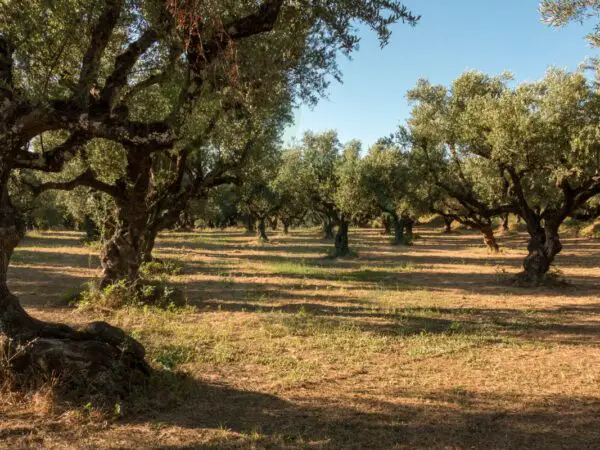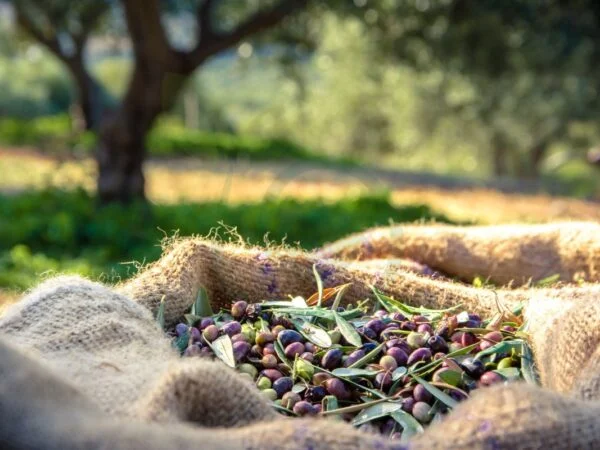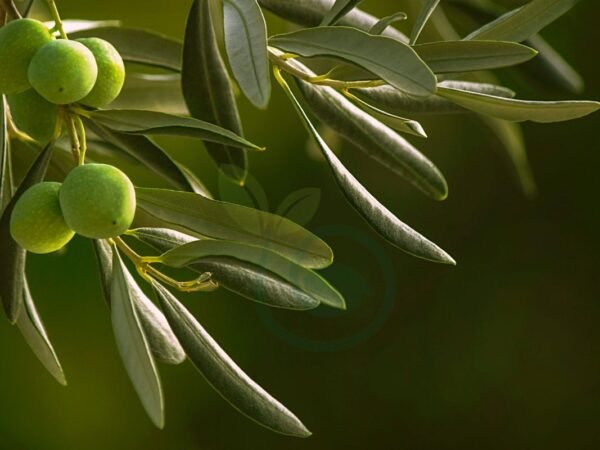Did you know that Russian olive trees, while beautiful, can be invasive and harmful to the environment? If you're facing the challenge of removing these stubborn trees from your property, fret not! From practical techniques to eco-friendly solutions, we've got you covered. Say goodbye to those pesky invasives and reclaim your habitat with our expert tips and tricks.
Key Takeaways
-
Timing is Key: Removing Russian olive trees during the dormant season, ideally in late fall or winter, can be more effective.
-
Choose Effective Methods: Utilize methods like cutting, herbicides, or a combination of both for successful removal.
-
Implement Best Practices: Follow proper disposal methods to prevent regrowth and spread of Russian olive trees.
-
Adapt management techniques to suit the specific conditions and challenges in the Pacific Northwest region, including riparian areas and invasives.
-
Persistence Pays Off: Consistent and thorough eradication efforts are crucial to successfully getting rid of Russian olive trees.
-
Stay Vigilant: Address challenges promptly and monitor for regrowth, including thorns, to prevent Russian olive trees from returning.
Understanding Russian Olive Trees
Impact Assessment
Russian olive trees can invade areas quickly, outcompeting native plants for resources. Evaluate the extent of their invasion in your area to understand the scale of the issue. Consider how these trees affect local plant species and ecosystems, as they can have significant economic and ecological consequences.
To assess the impact accurately, observe how Russian olive trees alter soil composition and nutrient availability. This invasive species tends to grow rapidly, potentially disrupting water resources and aquatic ecosystems in its vicinity.
Growth Patterns
Understanding the growth habits of Russian olive trees is crucial when planning their removal. These trees exhibit rapid growth due to various factors like efficient reproductive strategies. Identifying these patterns can help develop effective strategies for eradication.
Russian olive trees are known for their ability to spread quickly through seed dispersal mechanisms that aid in their proliferation across different environments.
Environmental Effects
The negative environmental effects caused by Russian olive trees can be detrimental to ecosystems. Their presence alters soil conditions, impacting nutrient availability essential for other plant species' survival. These invasive trees can negatively influence water resources by depleting them significantly.
Exploring how Russian olive tree growth affects aquatic ecosystems sheds light on its broader ecological implications.
Timing for Removal
Optimal Seasons
Russian olive tree removal requires strategic timing to be most effective. Consider the optimal seasons for this task, taking into account weather conditions and growth cycles of the trees. By planning your removal efforts during specific seasons, you can increase the success rate of controlling Russian olive trees. For example, tackling removal in late fall or early spring when the trees are dormant can make it easier to manage.
When aiming to get rid of Russian olive trees, understanding their growth cycles is crucial. Familiarize yourself with the different stages these trees go through and how each phase impacts management strategies. By recognizing the growth cycle they are in, you can implement targeted control methods tailored to that specific stage. For instance, if you notice vigorous new growth on a tree, focusing on pruning during that time can help prevent further spread.
Growth Cycles
The various phases of growth in Russian olive trees significantly influence how you approach their removal process. Being aware of these growth cycles allows you to adapt your tactics accordingly for better outcomes. Whether it's addressing young saplings or mature trees with established root systems, adjusting your strategy based on their current growth stage is essential for successful removal efforts.
Understanding when is the best time to remove Russian olive trees plays a vital role in effectively managing them from your property landscape. By aligning your removal actions with optimal seasons and considering their growth cycles carefully, you can enhance the efficiency and impact of your tree elimination endeavors.
Effective Removal Methods
Mechanical Methods
Mechanical methods like cutting and uprooting are commonly used. Cutting involves using the right techniques and tools, ensuring effective removal. Proper cutting techniques involve making precise cuts close to the ground to prevent regrowth. By understanding how cutting works as a control method, you can effectively manage Russian olive trees on your property.
Uprooting is another mechanical method that can be employed for removing Russian olive trees completely. Depending on the tree's size and location, choosing between mechanical or manual approaches is crucial for successful uprooting. Practicing safe and efficient uprooting techniques not only prevents regrowth but also ensures a thorough removal process.
Chemical Methods
In addition to mechanical methods, chemical solutions like herbicides can be utilized for Russian olive tree removal. Herbicides offer an effective way to control these invasive plants but come with pros and cons that need consideration before use. Understanding different herbicide options available allows you to choose the most suitable one based on your specific needs.
Application techniques play a significant role in maximizing the effectiveness of herbicides when targeting Russian olive trees. Techniques such as foliar spray, basal bark application, or cut stump methods provide various options for applying herbicides efficiently. Following recommended guidelines during application ensures safe practices while effectively managing and eliminating Russian olive trees from your surroundings.
Best Practices for Control
Preventive Strategies
Russian olive trees can be invasive, spreading rapidly and outcompeting native vegetation. To prevent their proliferation, it's crucial to educate landowners and communities about the risks associated with these trees. Early detection is key; removing young Russian olive trees promptly can prevent further spread. By implementing preventive measures, you can curb the invasion of Russian olive trees effectively.
Implementing preventive strategies involves raising awareness about the negative impacts of Russian olive tree invasion on ecosystems. Educating others helps in identifying and addressing new infestations early on before they become widespread problems. Encouraging prompt removal of young trees is essential to mitigate their growth and protect native plant species from being overtaken.
-
Pros:
-
Effective in curbing the spread of Russian olive trees.
-
Helps preserve biodiversity by preventing displacement of native plants.
-
Cons:
-
Requires ongoing education efforts.
Continuous Monitoring
Establishing a monitoring system allows you to keep track of Russian olive tree growth patterns and expansion areas accurately. Regular assessments help evaluate the effectiveness of control methods employed against these invasive species. Timely identification of new infestations or regrowth enables swift intervention to prevent further encroachment.
Continuous monitoring plays a vital role in managing invasive species like Russian olive trees by providing real-time data on their distribution and density levels across different landscapes. This information aids in making informed decisions regarding control measures based on current infestation rates observed during monitoring activities.
- Regularly assess control methods' effectiveness through monitoring.
- Identify new infestations early for timely intervention against Russian olive tree spread.
- Establish a robust monitoring system to track growth patterns accurately.
Techniques for Managing in the Pacific Northwest
Regional Challenges
Russian olive trees present specific challenges in the Pacific Northwest due to the region's unique climate and soil conditions. Understanding these factors is crucial for effective management strategies. By collaborating with local experts and organizations, you can tailor your approach to address regional challenges efficiently.
In this region, the damp climate and fertile soils create ideal conditions for Russian olive trees to thrive, making their removal a challenging task. These trees have deep root systems that can spread rapidly, impacting native vegetation and wildlife habitats. To combat these issues effectively, it is essential to consider how the environment influences the growth of Russian olive trees.
Adapted Strategies
To tackle Russian olive tree removal successfully in the Pacific Northwest, exploring adapted strategies is key. Learning from experiences in other regions or similar ecosystems can provide valuable insights into effective management approaches. By modifying existing techniques to suit local conditions, you can enhance the efficiency of your removal efforts.
One adapted strategy involves utilizing specialized equipment designed for removing invasive species like Russian olive trees without causing harm to surrounding vegetation. For instance, mechanical methods such as cutting or uprooting combined with herbicide application have shown promising results in controlling tree populations effectively.
Strategies for Eradication
Integrated Management
To effectively eradicate Russian olive trees, it is crucial to adopt an integrated approach. This involves combining various control methods strategically. For instance, you can start by cutting down the trees and uprooting them from the ground. Following this, applying herbicides to prevent regrowth can be highly effective in ensuring long-term removal of these invasive species.
Furthermore, integrating mechanical, chemical, and biological control methods can significantly enhance the success rate of eradication efforts. By utilizing a combination of these approaches, you create a more comprehensive strategy that targets Russian olive trees at different growth stages and ensures thorough removal.
Community Efforts
Engaging the community in initiatives aimed at removing Russian olive trees is essential for achieving widespread success in eradicating these invasive plants. One way to involve local residents is through volunteer programs dedicated to tree removal activities. By organizing such programs, communities can come together to actively participate in clearing out Russian olive trees from their surroundings.
Moreover, raising awareness through campaigns focused on the importance of managing invasive species like Russian olives helps foster a sense of collective responsibility among community members. When individuals understand the detrimental impact these plants have on ecosystems and biodiversity, they are more likely to join forces in combating their spread.
Addressing Challenges
Russian olive trees pose significant challenges, especially concerning property damage. These invasive trees have robust root systems that can wreak havoc on infrastructure like underground pipes and foundations. Their aggressive growth can also interfere with agricultural activities by outcompeting native plants for resources, affecting crop yields. Moreover, the presence of Russian olive trees on a property can diminish its overall value due to the potential hazards they present.
Timely removal of Russian olive trees is crucial to prevent further damage to properties. If left unchecked, these trees can continue encroaching on structures and utilities, leading to costly repairs or replacements. By addressing the issue promptly and efficiently, property owners can mitigate the risks associated with Russian olive tree infestations and safeguard their investments from long-term consequences.
- Property Damage:
- Robust root systems causing infrastructure issues
- Interference with agriculture impacting crop yields
- Diminished property value due to hazards
Biodiversity impact is another critical aspect influenced by the presence of Russian olive trees. These invasive species disrupt local ecosystems by altering habitats and competing with native flora for space and nutrients. Such disruptions can lead to a decline in biodiversity as indigenous plant species struggle to survive in the altered environment.
Removing Russian olive trees plays a vital role in restoring biodiversity within affected areas. By eliminating these invasive plants, natural habitats have a better chance of recovering their balance, allowing native species to thrive once again without facing competition from aggressive intruders like Russian olives.
- Biodiversity Impact
Controlling Regrowth
Monitoring Techniques
Russian olive tree populations can be effectively managed by employing various monitoring techniques. Utilizing remote sensing allows for the collection of accurate data on the distribution and density of these trees. GIS mapping provides valuable insights into the spatial extent of Russian olive infestations, aiding in targeted removal efforts. Ground surveys offer a hands-on approach to assess the effectiveness of control measures.
Monitoring changes in vegetation composition is crucial as it serves as an indicator of successful control efforts. By observing shifts in plant species diversity post-removal, one can gauge the impact on the ecosystem. Density monitoring helps track regrowth rates, enabling timely intervention to prevent re-establishment.
Secondary Removal Methods
In addition to primary removal strategies, exploring secondary removal methods can enhance control outcomes further. Biological control agents, such as insects or pathogens specific to Russian olive trees, offer a sustainable solution by targeting these invasive species selectively. Livestock grazing presents another eco-friendly option where animals feed on young shoots and saplings, impeding regrowth.
Considering controlled burns or prescribed fires can be effective under certain conditions for managing Russian olive trees' regrowth post-removal activities. Fire acts as a natural disturbance that inhibits seed germination and eliminates existing seedlings without harming native vegetation significantly.
You now have a comprehensive understanding of Russian Olive trees and how to effectively manage their removal. By considering the best timing, utilizing the most effective removal methods, and implementing proper control practices, you can successfully address the challenges associated with these invasive trees. Remember to apply the strategies discussed, especially in regions like the Pacific Northwest where managing them is crucial. Stay proactive in controlling regrowth to ensure long-term success in eradicating Russian Olives from your property.
Take action now by applying the techniques and best practices outlined in this guide to tackle Russian Olive trees head-on. Your efforts will not only enhance the health of your landscape but also contribute to the overall ecosystem's well-being. Keep up the good work in managing invasive species for a greener and healthier environment!
Frequently Asked Questions
How do Russian Olive Trees impact the environment?
Russian Olive Trees are invasive species that outcompete native plants, affecting biodiversity. Their dense growth can alter ecosystems and reduce water availability for other plants. Removing them is crucial to restore balance in the ecosystem.
What is the best time to remove Russian Olive Trees?
The best time to remove Russian Olive Trees is during their dormant season in late fall or winter. This timing reduces the chances of regrowth and minimizes stress on surrounding vegetation during active growing seasons.
What are effective removal methods for Russian Olive Trees?
Effective removal methods for Russian Olive Trees include cutting them down close to the ground and immediately treating the stumps with herbicides. Alternatively, you can also opt for mechanical removal techniques like stump grinding or pulling out the roots.
How can I prevent regrowth after removing Russian Olive Trees?
To prevent regrowth after removing Russian Olive Trees, it's essential to regularly monitor the area for any new shoots sprouting from remaining roots or seeds. Applying herbicides to cut stumps and practicing vigilant maintenance will help ensure successful eradication.
Are there specific challenges when managing Russian Olive Trees in the Pacific Northwest?
Yes, managing Russian Olive Trees in the Pacific Northwest poses challenges due to their adaptability to various soil types and climates in this region. It requires a tailored approach considering factors like weather patterns, soil conditions, and local regulations.
Image Source: Paid image from CANVA




